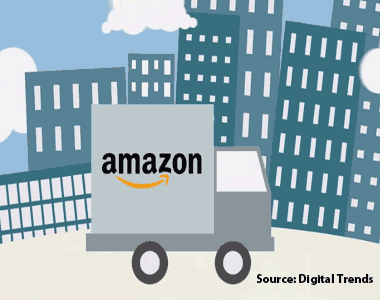| |
|
| |
|
 |
Supply
Chain by the Numbers |
| |
|
| |
- April 11, 2019 -
|
| |
|
| |
|
| |
|
| |
Amazon Taking another Step in Direct Parcel Shipping; Walmart Adding Robots in Stores and DCs; Retail Apocalypse to Get Much Worse; IMF Downgrases Global Economy |
| |
|
| |
| |
| |
| |
3 |
 |
That's how many metro areas – New York, Chicago and Los Angeles – in which Amazon is now offering a rebranded service to its marketplace customers called Amazon Shipping, the new name for what was initially called Shipping with Amazon (SWA) when it was tested in LA in 2018. Based on a report fro Amazon-focused research company TJI Research, Amazon Shipping is said to involve Amazon picking up packages directly from select marketplace customers it is "inviting" to be part of the program. This would include daily parcel picks Monday to Friday and deliveries seven days a week to customers nationwide. Marketplace customers sell over the Amazon web site but traditionally do their own order fulfillment. This full seller-to-customer shipping service is just the latest sign that Amazon not only its developing its long denied plans to become a major parcel carrier of its own, but also has ambitions of being a major logistics service provider beyond parcel shipping. |
|
|
| |
| |
|
|
|
That's the estimated number of US retail stores in the clothing, electronics and furniture areas that will be closed by 2026, when on-line shopping is expected to make up 25% of retail sales, according to a new report from the analysts at UBS. UBS estimates that roughly 16% of overall sales are made on-line currently. All told, UBS predicts 1,000 apparel stores, 10,000 consumer electronics stores and 8,000 home furnishing stores will be shuttered in the next seven years. (We have to wonder how many stores in those retail sectors could possibly be left after such massive closures). The report also cited data finding that the average US household spent $5,200 on-line last year, up nearly 50% from five years earlier. "This is a healthy cleansing for the retail industry," said John D. Morris, senior brand apparel analyst for financial services firm D.A. Davidson. "We're in the middle of a multi-year retail purge. Companies are finding that when it comes to stores, less is more." That's one way to put it.
|
| |
| |
|
| |
| |
3.3% |
 |
That is the revised forecast this week from the International Monetary Fund for global economic growth in 2019, down from 3.5% predicted in January. What's going on? Global economic growth in 2019 is off to a worse start than was apparent earlier in the year, with nearly the entire world economy stumbling, the IMF said. In explaining the lowered expectations, the IMF pointed to an environment of increased "trade tensions and tariff hikes between the United States and China, a decline in business confidence, a tightening of financial conditions, and higher policy uncertainty across many economies." Another key factor: global trade, which had been growing at about 5%, expanded by only 3.8% last year and is forecast to rise just 3.4% in 2019. The US economy, while seen outperforming other developed economies, also got a downgrade, from a forecast of 2.5% to 2.3%.
|
| |
| |
| |
| |
| |
|
|
|
| |
 |
 |
| |
|
|
| |